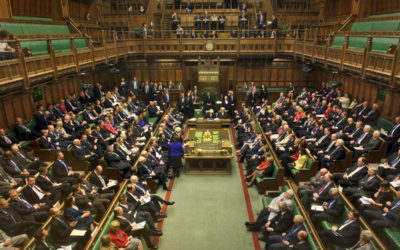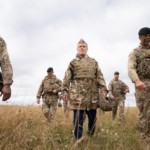Parliamentary mental health inquiry shows youngest military recruits and those from disadvantaged backgrounds face greater mental health risks than others in the forces
ForcesWatch press release
We welcome this recommendation but add that research should be independent, based on cross-sections rather than those who seek help, and in anonymised conditions.
We regret that moral injury (how issues of conscience impact mental health) which is recognised by the US Department of Veterans Affairs, was not mentioned in the Committee’s report, nor were other significant areas related to wellbeing such as violent offending and drinking.
- While limited research and data shows mental health in military populations to be broadly the same as in the civilian population, the mental health of the youngest recruits is markedly worse than that of their civilian counterparts. The Surgeon-General accepted the evidence submitted by ForcesWatch and others and admitted that ‘academic data suggests that younger recruits may be more at risk’.
- The only group of veterans to show higher rates of suicide than the general public were those under the age of 24, who have a risk three times higher than their civilian counterparts. (p. 17 of report)
- Early service leavers (most common among youngest recruits) and young recruits with a lower educational status, in a lower rank and from regions with historic lower social economic status, suffer more from mental ill-health than others in the military population. Yet the military recruits the youngest personnel in Europe, and targets those from disadvantaged backgrounds.
- Stress-related mental health problems are more common among military personnel than among civilians, particularly depression and anxiety (CMDs).[1]
- The report stresses that military service can have a positive effect on mental health and can help those who were more vulnerable before they joined. However it admits the military is unlikely to prevent mental health difficulties developing, but rather delays them until after service. Upon returning to the ‘place they started from’ (‘unemployment, social isolation, chaotic lifestyle, depression’), delayed mental health issues are then likely to develop and perhaps be worsened particularly given the difficulty of transitioning into civilian life.
- The report omitted the fact that a military career increases the likelihood of committing violent offences, and that harmful levels of drinking have been shown to be around three times as common among the youngest age groups in the military as among their civilian peers.
- The report detailed the limitations of current research, saying that about ‘half to two-thirds of serving personnel and veterans with mental health issues may not be seeking help.’ Since UK Government statistics only report those who seek help, they may therefore be significantly underestimating how many serving personnel and veterans have mental health conditions. Other countries such as Australia, Canada and the US base their data on anonymous surveys of cross-sections of the military population, not just those seeking help – unlike the UK Ministry of Defence.
Emma Sangster, Coordinator of ForcesWatch, said: “This report confirms that young recruits are at greater risk from the mental health risks associated with being in the armed forces than older recruits.
“In its post-Deepcut inquiry of 2005, the Defence Committee recommended that there be an independent review of recruiting 16 and 17 year olds, yet no such review has ever been conducted.
“We urge the Committee to do what it can to ensure that a review of recruitment age is now carried out in order to safeguard the best interests of its youngest recruits.”
NOTES:
ForcesWatch submission to the Defence Committee’s Armed Forces and Veterans Mental Health Inquiry, 6 March 2018: https://www.https://www.forceswatch.net/wp-content/uploads/armed_forces_and_veterans_mental_health_inquiry_submission.pdf
House of Commons Defence Committee: Mental Health and the Armed Forces, Part One: The Scale of mental health issues Eleventh Report of Session 2017–19
1. A British study in 2015 found that military personnel are twice as likely as working civilians to suffer from CMDs. The prevalence of PTSD, alcohol misuse and self-harm are all appreciably higher among ex-forces personnel than both the general population and current personnel, which echoes the Committee’s recognition that mental health issues can be delayed but then more likely to develop after transitioning back into civilian life. For references see pages 4 and 5 of the ForcesWatch submission to the Defence Committee’s Inquiry.
See more: legislation & policy, recruitment age, risks, UK Parliament, mental health, submission of evidence










